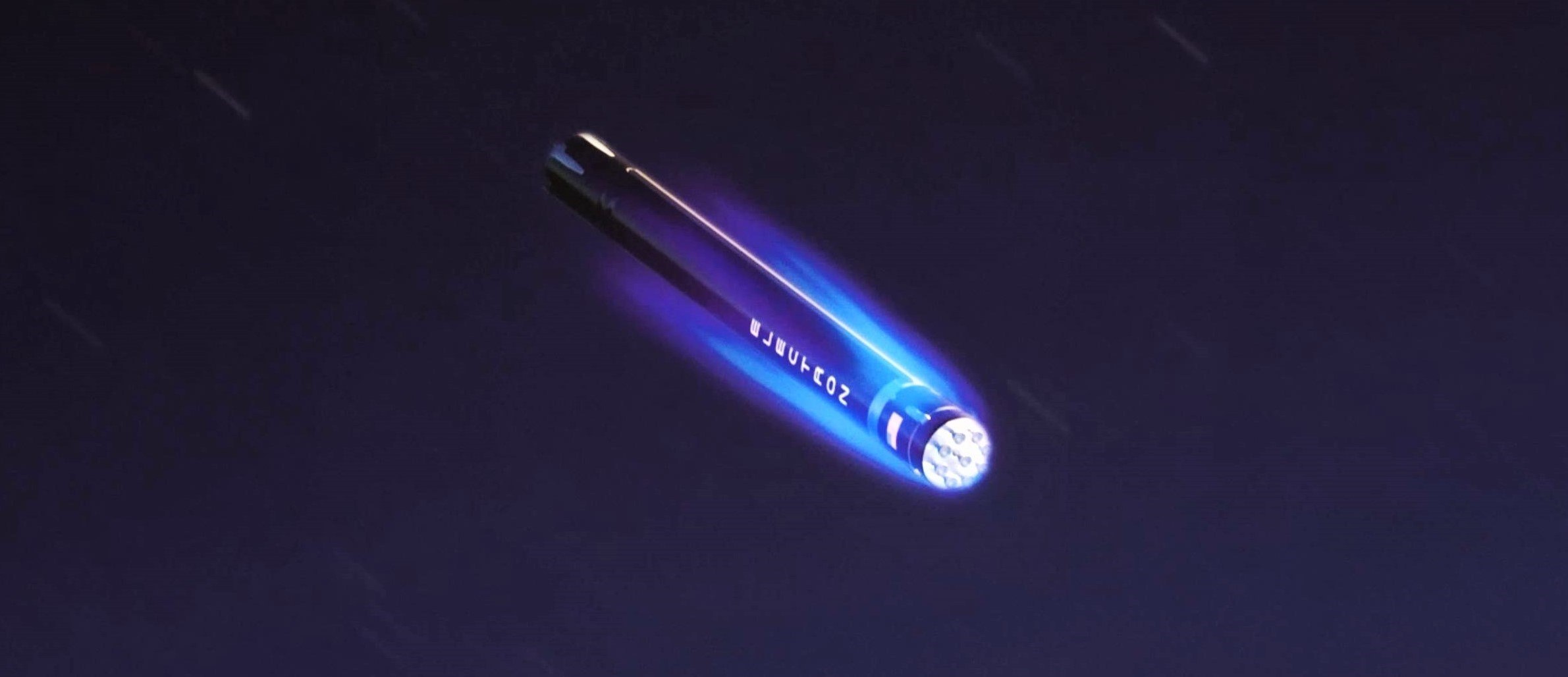

News
Rocket Lab’s first step towards SpaceX-style rocket reuse set for next Electron launch
Just over a year ago, Rocket Lab announced intentions to recover the first-stage of its small Electron launch vehicle, potentially making it the second private company on Earth – after SpaceX – to attempt to recover and reuse an orbital-class rocket.
In a media call earlier this week, Rocket Lab founder and CEO, Peter Beck, revealed that the first recovery attempt has been expedited to mid-November and will occur following the next flight of Rocket Lab’s Electron rocket.
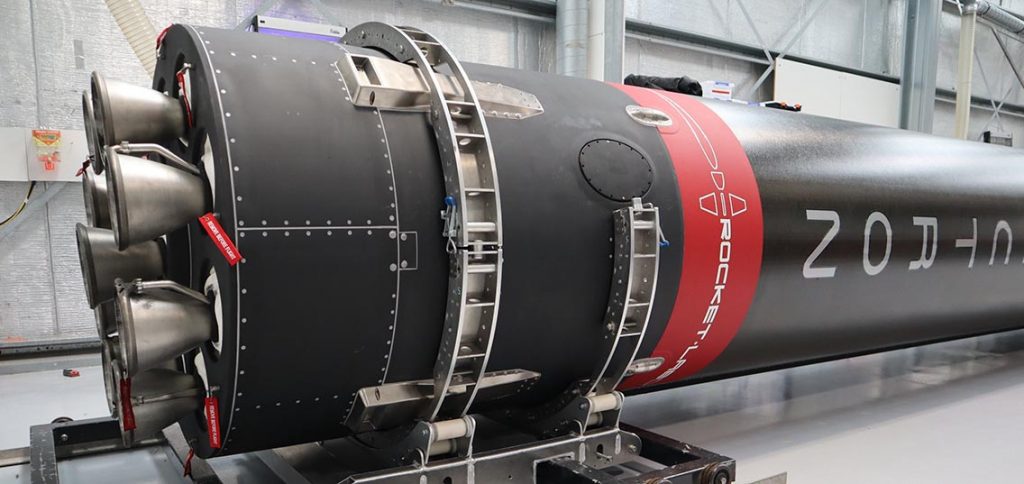
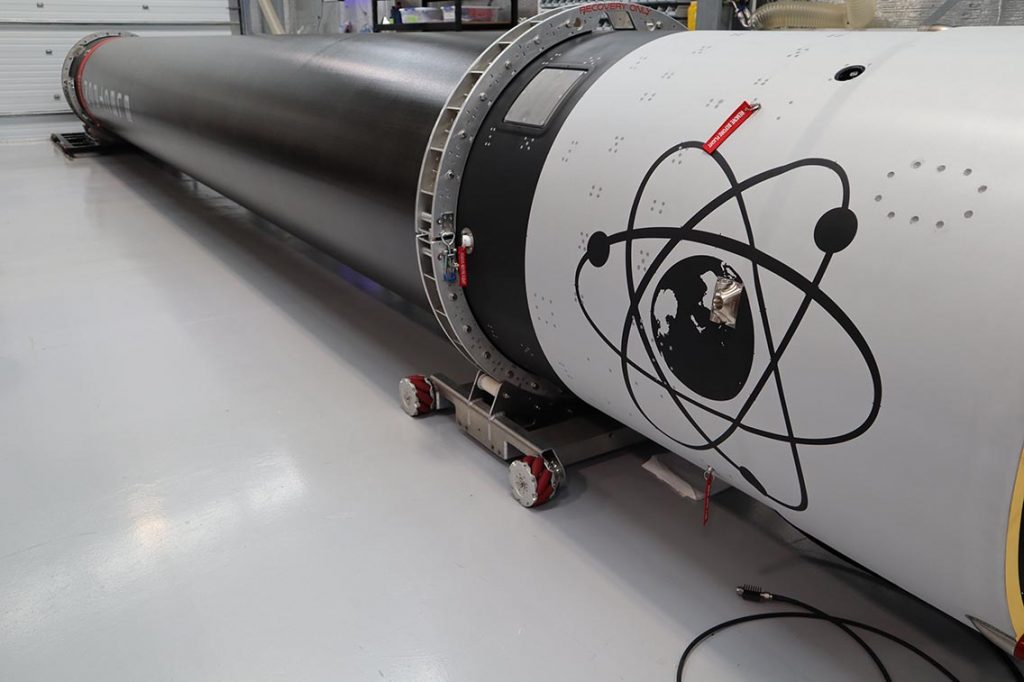
Like competitor SpaceX, Rocket Lab aims to recover its first stage Electron booster to decrease production time and increase launch cadence. Rocket Lab now has three launchpads to launch from and is licensed by the Federal Aviation Administration to carry out up to 130 launches per calendar year. In order to increase the launch cadence of the Electron, production times need to decrease. This can effectively be accomplished with the recovery, refurbishment, and reuse of the small, carbon composite rocket booster.
Recovery Doesn’t Happen Overnight
Initially, the first step of recovering an expended first stage – a guided and controlled soft water landing under a parachute and retrieval by sea-vessel – was intended for the seventeenth launch of the Electron prior to the end of this calendar year. However, Rocket Lab is now targeting the sixteenth launch for the first recovery attempt, a mission appropriately nicknamed “Return to Sender.” When asked what prompted the move to an earlier launch, Beck stated to reporters, “the guys got it done in time. With a new development like this, it’s always very dependent on how the program runs and the program ran very successfully.”
Rocket Lab has been working toward this recovery attempt for quite some time. In late 2018, Rocket Lab began collecting data during launches to inform future recovery efforts and determine whether or not it would even be feasible with a small-class rocket. The first major block upgrade of the Electron booster debuted on the tenth flight, “Running Out of Fingers,” in December 2019.
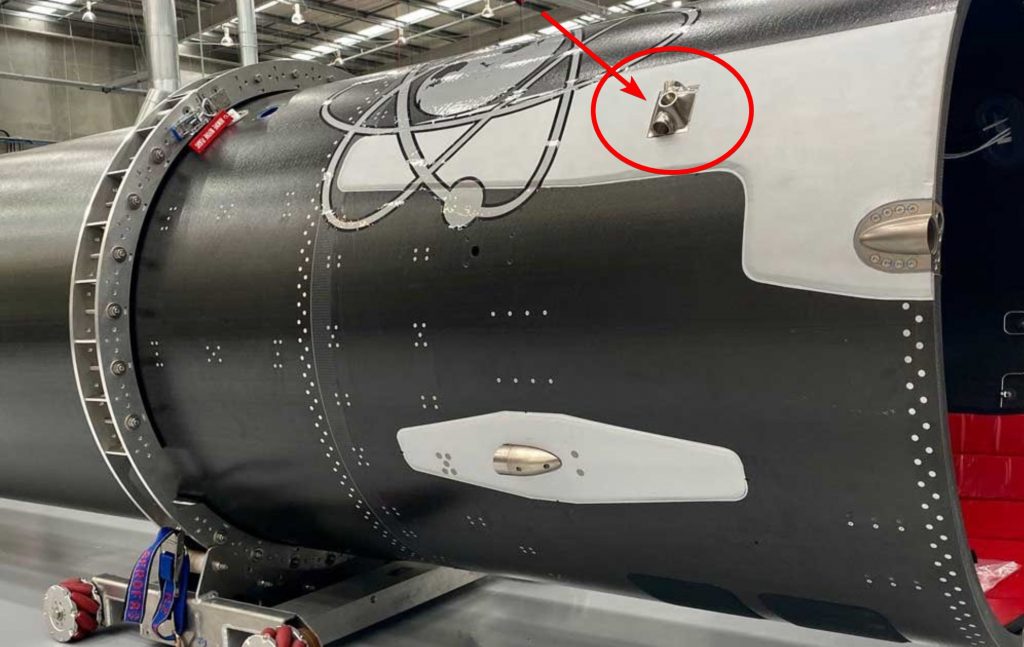
The first recovery milestone, a task Beck called getting through “the wall,” was achieved following the tenth flight. And again in January 2020 following a successful eleventh flight of Electron. The “wall” Beck refers to is the Earth’s atmosphere. Returning a booster through the atmosphere intact requires extreme precision in terms of re-entry orientation and how efficient the heat shield is.
Because the Electron is a small-class rocket, Rocket Lab was able to collect enough data from previous flights to determine that the carbon composite frame could withstand a fall through the atmosphere given a precise enough angle of attack to sufficiently distribute thermal loads. According to Beck, the process is referred to as an “aero thermal decelerator.”
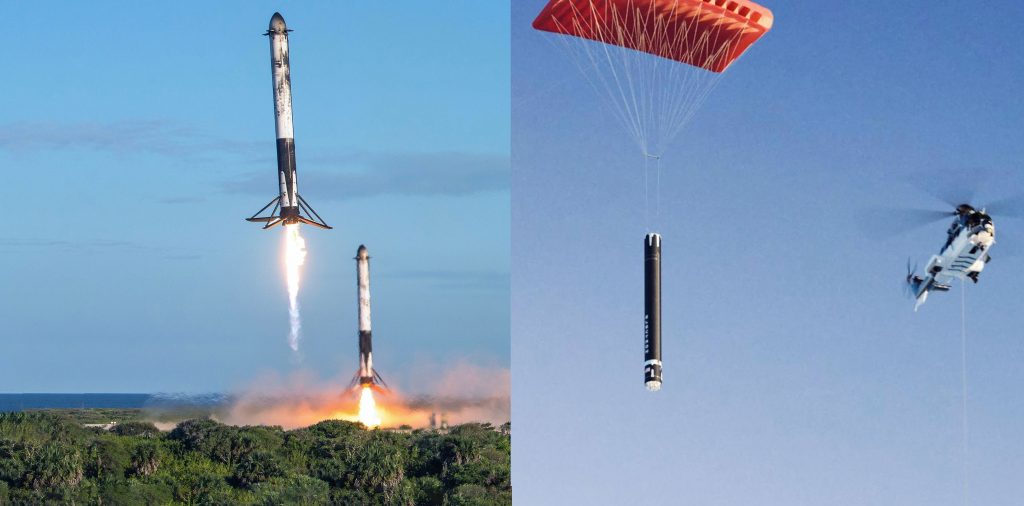
Small Rocket Following in Big Footsteps
SpaceX, Elon Musk’s space exploration company pioneered booster landing, recovery, and reuse efforts when the first Falcon 9 booster to successfully land returned to Landing Zone 1 at Cape Canaveral Air Force Station in Florida on December 21, 2015. SpaceX approaches the process of booster re-entry in a different way than what Rocket Lab has decided to attempt with Electron.
The Falcon 9 boosters perform a re-orientation flip and use the engines to perform what is known as a boost-back burn to set the rocket on the path to return to the Earth’s surface. The rocket then autonomously deploys titanium grid-fins that essentially steer, and slow the booster down as it falls through the atmosphere. Finally, the engines are re-ignited during a series of burns, and landing legs are deployed to propulsively land either at sea aboard an autonomous spaceport droneship or back on land at a landing zone.
The booster of Rocket Lab’s tenth mission in 2019 was outfitted with guidance and navigation hardware and cold gas attitude control thrusters used to flip and orient the booster to withstand the stresses of re-entry. Otherwise, no other hardware was incorporated to reduce the stresses of re-entry or slow the vehicle as it fell through the atmosphere. The booster made it through “the wall” intact and eventually slowed to a rate less than 900km per hour by the time it reached sea-level for an expected impact.
Eventually, Rocket Lab imagines its small Electron booster to be caught during a controlled descent under parachute canopy with a specially equipped helicopter and grappling hook. Beck and his team spent weeks outfitting a test article with prototype parachutes that were manufactured in-house.
A low-altitude drop test of a test article to simulate an Electron first stage was performed and a helicopter was able to snag the test article mid-air and deliver it one piece. Essentially, this proved that the concept was at least feasible and the small-class rocket could in fact be fully recovered to eventually be refurbished and reused. Since the completion of this drop test in April of 2020, the parachute design has been reevaluated and many more drop tests have been conducted. The final drop test with a more traditional system of a drogue parachute and an 18m ringsail type main parachute occurred in August of 2020 with a first stage simulator.
Next up, Rocket Lab plans to use the finalized design of the parachute system to bring Electron home safely for a soft landing in the Pacific Ocean. After which the booster will be collected by a recovery vessel, similar to the process that SpaceX uses to scoop its payload fairings from the water.
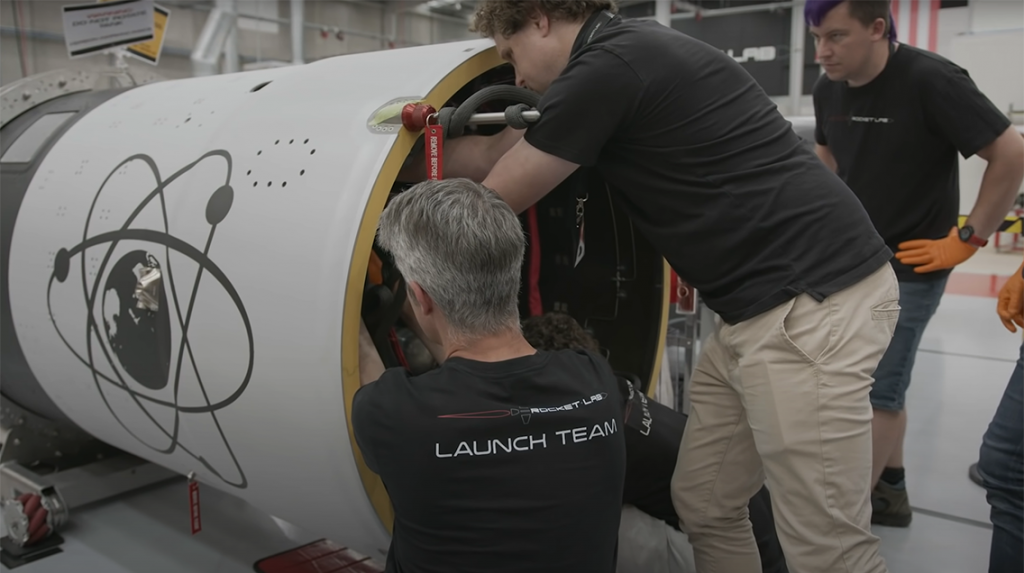
“Bringing a whole first stage back intact is the ultimate goal, but success for this mission is really about gaining more data, particularly on the drogue and parachute deployment system,” said Beck. With the parachute system verified the teams should be able to make any further iterations for a full capture and recovery effort on a future mission relatively quickly.
Rocket Lab will try to fully recover the “Return to Sender” expended first-stage booster once it separates approximately two and a half minutes after liftoff from Launch Complex 1 on the Mahia Penninsula of New Zealand. Electron will support a rideshare payload of thirty smallsats. The window to launch the sixteenth Electron mission opens on November 16 UTC (November 15 PT / ET). A hosted live webcast of the launch and recovery attempt will be provided on the company website approximately fifteen minutes prior to liftoff.

Elon Musk
Elon Musk’s X will start using a Tesla-like software update strategy
The initiative seems designed to accelerate updates to the social media platform, while maintaining maximum transparency.

Elon Musk’s social media platform X will adopt a Tesla-esque approach to software updates for its algorithm.
The initiative seems designed to accelerate updates to the social media platform, while maintaining maximum transparency.
X’s updates to its updates
As per Musk in a post on X, the social media company will be making a new algorithm to determine what organic and advertising posts are recommended to users. These updates would then be repeated every four weeks.
“We will make the new 𝕏 algorithm, including all code used to determine what organic and advertising posts are recommended to users, open source in 7 days. This will be repeated every 4 weeks, with comprehensive developer notes, to help you understand what changed,” Musk wrote in his post.
The initiative somewhat mirrors Tesla’s over-the-air update model, where vehicle software is regularly refined and pushed to users with detailed release notes. This should allow users to better understand the details of X’s every update and foster a healthy feedback loop for the social media platform.
xAI and X
X, formerly Twitter, has been acquired by Elon Musk’s artificial intelligence startup, xAI last year. Since then, xAI has seen a rapid rise in valuation. Following the company’s the company’s upsized $20 billion Series E funding round, estimates now suggest that xAI is worth tens about $230 to $235 billion. That’s several times larger than Tesla when Elon Musk received his controversial 2018 CEO Performance Award.
As per xAI, the Series E funding round attracted a diverse group of investors, including Valor Equity Partners, Stepstone Group, Fidelity Management & Research Company, Qatar Investment Authority, MGX, and Baron Capital Group, among others. Strategic partners NVIDIA and Cisco Investments also continued support for building the world’s largest GPU clusters.
News
Tesla FSD Supervised wins MotorTrend’s Best Driver Assistance Award
The decision marks a notable reversal for the publication from prior years, with judges citing major real-world improvements that pushed Tesla’s latest FSD software ahead of every competing ADAS system.

Tesla’s Full Self-Driving (Supervised) system has been named the best driver-assistance technology on the market, earning top honors at the 2026 MotorTrend Best Tech Awards.
The decision marks a notable reversal for the publication from prior years, with judges citing major real-world improvements that pushed Tesla’s latest FSD software ahead of every competing ADAS system. And it wasn’t even close.
MotorTrend reverses course
MotorTrend awarded Tesla FSD (Supervised) its 2026 Best Tech Driver Assistance title after extensive testing of the latest v14 software. The publication acknowledged that it had previously criticized earlier versions of FSD for erratic behavior and near-miss incidents, ultimately favoring rivals such as GM’s Super Cruise in earlier evaluations.
According to MotorTrend, the newest iteration of FSD resolved many of those shortcomings. Testers said v14 showed far smoother behavior in complex urban scenarios, including unprotected left turns, traffic circles, emergency vehicles, and dense city streets. While the system still requires constant driver supervision, judges concluded that no other advanced driver-assistance system currently matches its breadth of capability.
Unlike rival systems that rely on combinations of cameras, radar, lidar, and mapped highways, Tesla’s FSD operates using a camera-only approach and is capable of driving on city streets, rural roads, and freeways. MotorTrend stated that pure utility, the ability to handle nearly all road types, ultimately separated FSD from competitors like Ford BlueCruise, GM Super Cruise, and BMW’s Highway Assistant.
High cost and high capability
MotorTrend also addressed FSD’s pricing, which remains significantly higher than rival systems. Tesla currently charges $8,000 for a one-time purchase or $99 per month for a subscription, compared with far lower upfront and subscription costs from other automakers. The publication noted that the premium is justified given FSD’s unmatched scope and continuous software evolution.
Safety remained a central focus of the evaluation. While testers reported collision-free operation over thousands of miles, they noted ongoing concerns around FSD’s configurable driving modes, including options that allow aggressive driving and speeds beyond posted limits. MotorTrend emphasized that, like all Level 2 systems, FSD still depends on a fully attentive human driver at all times.
Despite those caveats, the publication concluded that Tesla’s rapid software progress fundamentally reshaped the competitive landscape. For drivers seeking the most capable hands-on driver-assistance system available today, MotorTrend concluded Tesla FSD (Supervised) now stands alone at the top.
News
Elon Musk’s Grokipedia surges to 5.6M articles, almost 79% of English Wikipedia
The explosive growth marks a major milestone for the AI-powered online encyclopedia, which was launched by Elon Musk’s xAI just months ago.

Elon Musk’s Grokipedia has grown to an impressive 5,615,201 articles as of today, closing in on 79% of the English Wikipedia’s current total of 7,119,376 articles.
The explosive growth marks a major milestone for the AI-powered online encyclopedia, which was launched by Elon Musk’s xAI just months ago. Needless to say, it would only be a matter of time before Grokipedia exceeds English Wikipedia in sheer volume.
Grokipedia’s rapid growth
xAI’s vision for Grokipedia emphasizes neutrality, while Grok’s reasoning capabilities allow for fast drafting and fact-checking. When Elon Musk announced the initiative in late September 2025, he noted that Grokipedia would be an improvement to Wikipedia because it would be designed to avoid bias.
At the time, Musk noted that Grokipedia “is a necessary step towards the xAI goal of understanding the Universe.”
Grokipedia was launched in late October, and while xAI was careful to list it only as Version 0.1 at the time, the online encyclopedia immediately earned praise. Wikipedia co-founder Larry Sanger highlighted the project’s innovative approach, noting how it leverages AI to fill knowledge gaps and enable rapid updates. Netizens also observed how Grokipedia tends to present articles in a more objective manner compared to Wikipedia, which is edited by humans.
Elon Musk’s ambitious plans
With 5,615,201 total articles, Grokipedia has now grown to almost 79% of English Wikipedia’s article base. This is incredibly quick, though Grokipedia remains text-only for now. xAI, for its part, has now updated the online encyclopedia’s iteration to v0.2.
Elon Musk has shared bold ideas for Grokipedia, including sending a record of the entire knowledge base to space as part of xAI’s mission to preserve and expand human understanding. At some point, Musk stated that Grokipedia will be renamed to Encyclopedia Galactica, and it will be sent to the cosmos.
“When Grokipedia is good enough (long way to go), we will change the name to Encyclopedia Galactica. It will be an open source distillation of all knowledge, including audio, images and video. Join xAI to help build the sci-fi version of the Library of Alexandria!” Musk wrote, adding in a later post that “Copies will be etched in stone and sent to the Moon, Mars and beyond. This time, it will not be lost.”








